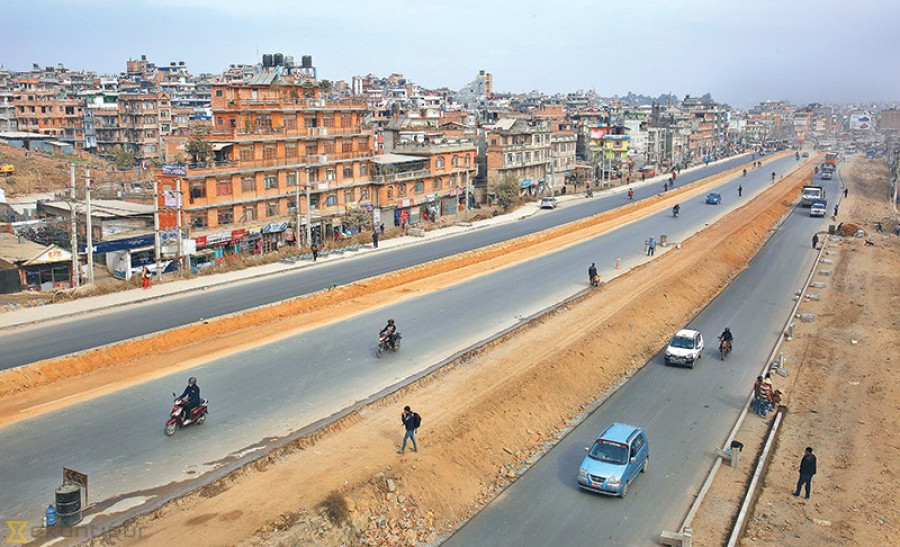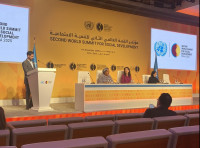Opinion
Pillars of road safety
The number of road fatalities in Nepal is increasing alarmingly despite an action plan
With a person dying on the roads every 30 seconds, more than 3,500 per day, over 1.25 million per year, and as many as 50 million injuries worldwide, road crashes are the ninth leading cause of death globally. Nepal has pledged to reduce road fatalities by 50 percent and developed the Nepal Road Safety Action Plan (2013-20) to meet its global commitment. However, road fatalities are increasing at an alarming rate and reached 2,385 deaths in 2016-17. There is an urgent need to find out where the problem lies and identify where the opportunities are for improving road safety.
The Decade of Action for Road Safety 2011-20, officially proclaimed by the United Nations General Assembly in 2010, has identified five subjects for focus known as pillars. This global plan serves as a tool to support the development of national and local plans of action, while simultaneously providing a framework to allow coordinated activities at the global level.
Pillar 1: Road safety management
It encourages the creation of multi-sectoral partnerships and designation of lead agencies with the capacity to develop and lead the delivery of national road safety strategies, plans and targets, underpinned by the data collection and evidential research to assess counter measure design and monitor implementation and effectiveness. It is about dealing with establishment of a lead agency (and associated coordination mechanisms) on road safety involving partners from a range of sectors; developing a national strategy; setting realistic and long-term targets for national activities based on data; ensuring that funding for implementation and establishing and support data systems for on-going monitoring and evaluation. The horizontal coordinated effort is required to play well in each pillar components with uniformity of actions resulting visible output in each pillar. The National Road Safety Council was officially established by a Cabinet decision during the 1990s, but it was not operationalised fully. The government is fully expected to take the necessary steps to make the Council a functioning body.
Pillar 2: Safer roads and mobility
It is about raising the inherent safety and protective quality of road networks for the benefit of all road users, especially the most vulnerable (like pedestrians, bicyclists and motorcyclists). This can be achieved through the implementation of road infrastructure assessment and improved safety-conscious planning, design, construction and operation of roads. It is all about promoting road safety ownership and accountability among road authorities, road engineers and urban planners; the needs of all road users as part of sustainable urban planning, transport demand management and land-use management; safe operation, maintenance and improvement of existing road infrastructure; development of safe new infrastructure that meets the mobility and access needs of all users; encouraging capacity building and knowledge transfer in safe infrastructure and encouraging research and development in safer roads and mobility.
Pillar 3: Safer vehicles
It consists of encouraging universal deployment of improved vehicle safety technologies for both passive and active safety through a combination of harmonisation of relevant global standards, consumer information schemes and incentives to accelerate the uptake of new technologies. The activities are towards encouraging member states to apply and promulgate motor vehicle safety regulations as developed by the United Nation’s World Forum; implementation of new car assessment programmes to increase the availability of consumer information about the safety performance of motor vehicles; agreement to ensure that all new motor vehicles are equipped with seat belts and anchorages (as minimum safety features); universal deployment of crash avoidance technologies such as electronic stability control and anti-lock braking systems in motorcycles; encourage the use of incentives for motor vehicles that provide high levels of road user protection.
Pillar 4: Safer road users
This helps in developing comprehensive programmes to improve road user behavior. Sustained or increased enforcement of laws and standards, combined with public awareness and education to increase seat-belt and helmet wearing rates, and to reduce drunk driving, speed and other risk factors. The activities are: Increasing awareness, seeking compliance with speed limits, seat belts and child restraints and drunk driving laws; evidence-based standards and rules to reduce speed-related, alcohol-related crashes and head injuries because of not wearing helmet. Safer road users should be in compliance with transport, occupational health and safety laws, and standards and rules for safe operation of commercial freight and transport vehicles.
Pillar 5: Post-crash response
Pillar number five is to increase responsiveness to post-crash emergencies and improve the ability of health and other systems to provide appropriate emergency treatment and longer term rehabilitation for crash victims. The activities should be focused on developing pre-hospital care systems, including the extraction of a victim from a vehicle after a crash, and implementation of a single nationwide telephone number for emergencies. This should be done by implementing the existing good practices and providing early rehabilitation and support to injured patients and those bereaved by road traffic crashes to minimise both physical and psychological trauma. It is necessary to encourage the establishment of appropriate road user insurance schemes to finance rehabilitation services for crash victims besides research and development to improve post-crash response.
This pillar seems to be secluded from the rest in Nepal’s context. The need to develop an ambulance policy for post-accident treatment and emergency treatment training is a must for road safety post-crash response. There is only one trauma centre in Kathmandu. It is necessary to establish at least one in each province. The development of an ambulance network along major highways, and urban and rural roads for easy and fast accessibility to hospitals should be treated as a major concern. Also, a road safety unit should be established at the Ministry of Health and Population for institutional enhancement.
Bhatta is a transport engineer and a executive board member of Nepal Cycle Society




 14.12°C Kathmandu
14.12°C Kathmandu









